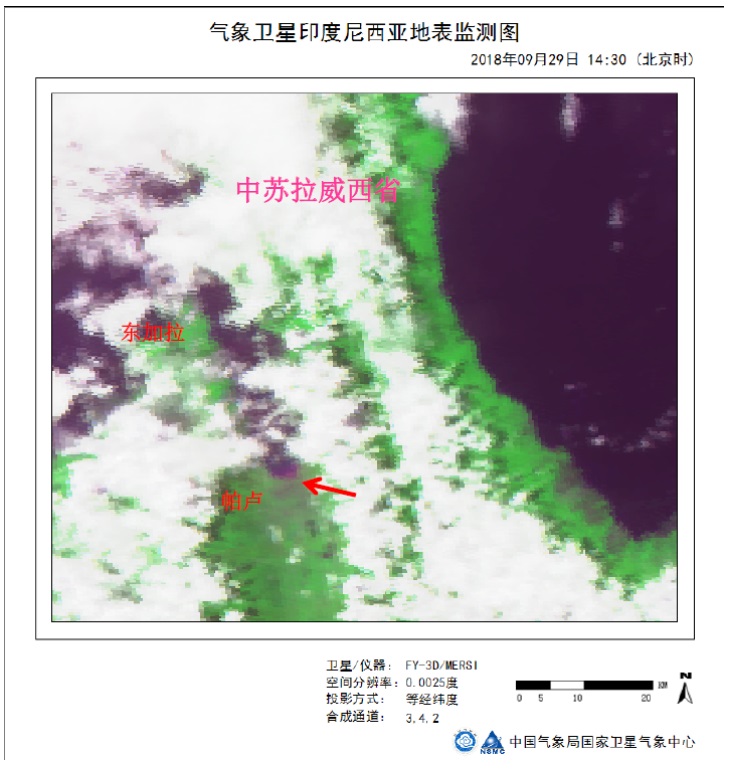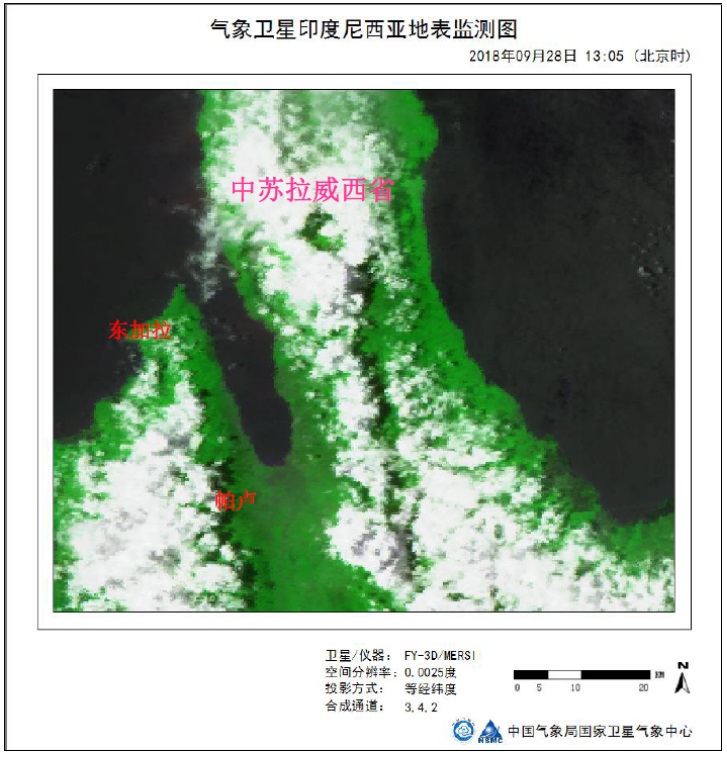Earthquakes occur following the release of energy when tectonic plates move apart. These plates move in currents in the Earth's lithosphere and the edges, which have been mapped to fault lines, sometimes collide. When the plates meet and become stuck, energy generated from the current is trapped until the plates move apart and seismic waves are generated. These waves cause earthquakes, as they quite literally shake the earth as they radiate outward, and do the same on the earth's surface once they reach it.
Since there is no way to identify an earthquake before it occurs, satellites can only be used to assess the aftermath. Optical and radar data can quickly help first responders to assess and map the damage, helping to identify the areas where survivors may be most in need and providing valuable intelligence on sites that may be unreachable on the ground.

Fig. Image two hours before the Magnitude 7.4 Earthquake in Indonesia on September 28, 2018 by FY-4A.

Fig. Land surface after the Magnitude 7.4 earthquake in Indonesia by FY-3D.

Fig. Land surface before the Magnitude 7.4 earthquake in Indonesia by FY-3D.